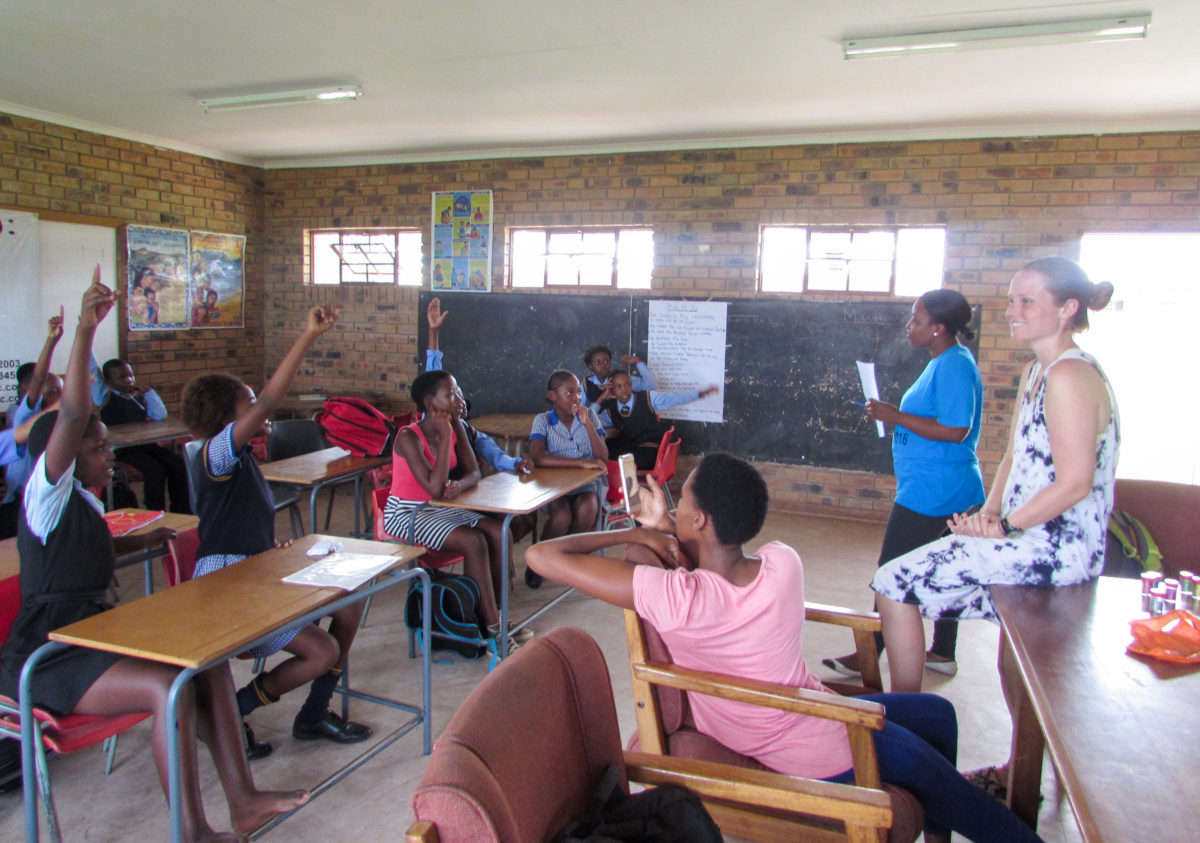Student Health Survey Results
Tobela!
If you remember, a few months ago I wrote about my CNA (community needs assessment) and all the work I was doing to complete it. Well, as part of my CNA, I conducted a Student Health Survey among secondary students in Mmametlhake. The survey asked questions about sexual health, alcohol consumption, and tobacco use in order to learn about the health of students and where intervention is most needed.


Here’s what I learned:
*sorry if it’s a bit dry, but the results are really interesting if you take the time to read, and I bolded the important stuff for ease
Of the 240 learners surveyed, 123 were female and 117 were male. 59.3% of the females are in relationships and 52.1% of the males are also in relationships. Of the girls in relationships, 50% are sexually active compared to only 11.1% of the females not in relationships. Of the males in relationships, 68.8% are sexually active, whereas only 31.3% of the single males are sexually active. This shows that children in relationships are much more likely to have sexual intercourse, and therefore, a positive intervention could be encouraging the learners to wait to enter into relationships.
In addition to asking about personal sexual history, the survey also asked about peer’s sexual activity. According to the survey, 69.1% of the females and 73.5% of the males have friends who are sexually active. This number is a lot higher than the 33.3% of girls and 52.9% of boys who admit to being sexually active themselves. These results can lead to the assumption that some learners are lying about sexual activity on the survey because they are more willing to admit their peers are having sex than they are. But there could also be an overlap of friends. Be careful how you interpret these results.
Question 3 asked whether the surveyed’s parents had ever talked to them about sex. 70.7% of the females and 52.9% of the males answered “yes”. This shows that parents are more likely to talk to their daughters about sex than their sons. Although the number of parents talking to their daughters about sex is very high and encouraging, an intervention can be done here to encourage parents to also engage their sons in the discussion.
Question 4 asked, “From whom did you first learn about sex?”. 20.32% of girls said they learned about sex from their friends, 22.7% said a parent or guardian, 6.5% said a relative other than parent or guardian, 43.1% said a teacher/school, and 4.1% said other (with 3.2% unanswered). Of the girls who learned about sex from their friends, 68% are sexually active, compared to only 25% sexual activity when learned from a parent and 24.5% when learned from a teacher or school. 36.75% of boys said they learned about sex from their friends, 11.1% said a parent or guardian, 8.5% said a relative other than parent or guardian, 26.49% said a teacher/school, and 15.38% said other (with 1.7% unanswered). Of the boys who learned about sex from their friends, 76.7% are sexually active, compared to 53.8% sexual activity when learned from a parent and 29% when learned from a teacher or school. The lesson here is that parents and teachers must talk to kids about sex before their friends in order to make a lasting impact on abstinence.
Many learners know about HIV and pregnancy as a risk of sex, but this survey hoped to learn if they also know about STDs/STIs and other risks of sexual activity; therefore, an open-ended question was asked in that regard. Most learners did answer that STDs and STIs are a risk of sexual activity, but another common answer was “dropping out of school”. Also, multiple girls answered “low self-esteem” whereas none of the boys answered that. Clearly, someone is educating the girls on this matter, and not the boys. A disappointing answer was from four learners who answered “none”.
Question 6 asked about whether the learners have children. Only six of the 123 girls have children (4.8%) compared to 14 of the 117 boys (11.96%), three of those 14 boys (21.4%) have two kids. This shows that the girls who the boys impregnate are not in school because they either never attended, or they had to drop out due to the pregnancy. One boy, in particular, has a 5-year-old child and he himself is only 16!
Question 7 asked if the learners would like more sexual education, 79.67% of the girls and 76.9% of the boys said “yes”. This directly applies to the work Peace Corps does in HIV awareness education and shows that the learners are eager to learn more and participate in the discussion.
In regards to alcohol, 38.2% of the females admitted to drinking alcohol, and only 25.5% of those girls are of the legal drinking age. 63.2% of the males admitted to drinking alcohol, and only 44.6% of those boys are of the legal drinking age. One girl admitted to drinking alone, and 14 boys admitted to the same behavior. This is the most troubling statistic since drinking alone is a huge indicator of future drinking problems.
The last health question asked about smoking cigarettes. Only 2 girls claim to smoke (1.6%) compared to 30 boys (25.6%).
When asked about plans after secondary school, the majority of girls and boys answered that they plan to attend university (87.8% of girls and 71.8% of boys). Other plans include immediately entering the workforce (2.4% of girls and 14.5% of boys) and attend a specialty or trade school (1.6% of girls and 4.27% of boys).
What do you think? Are you surprised by these results? Do you think surveying a high school in America would show in the same results?

